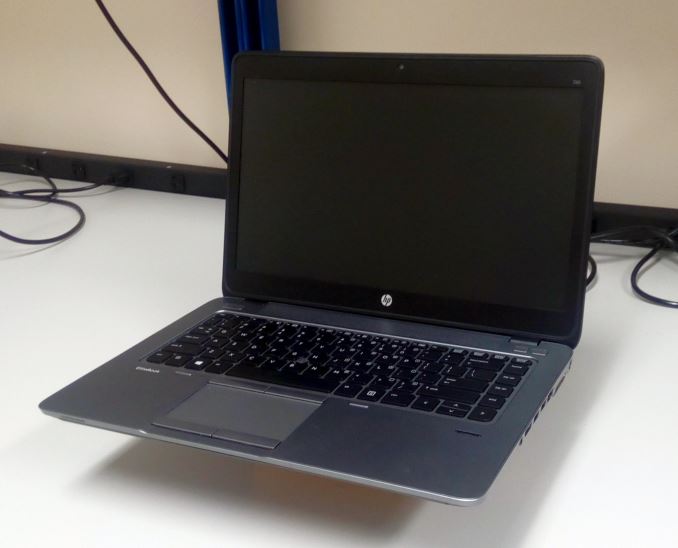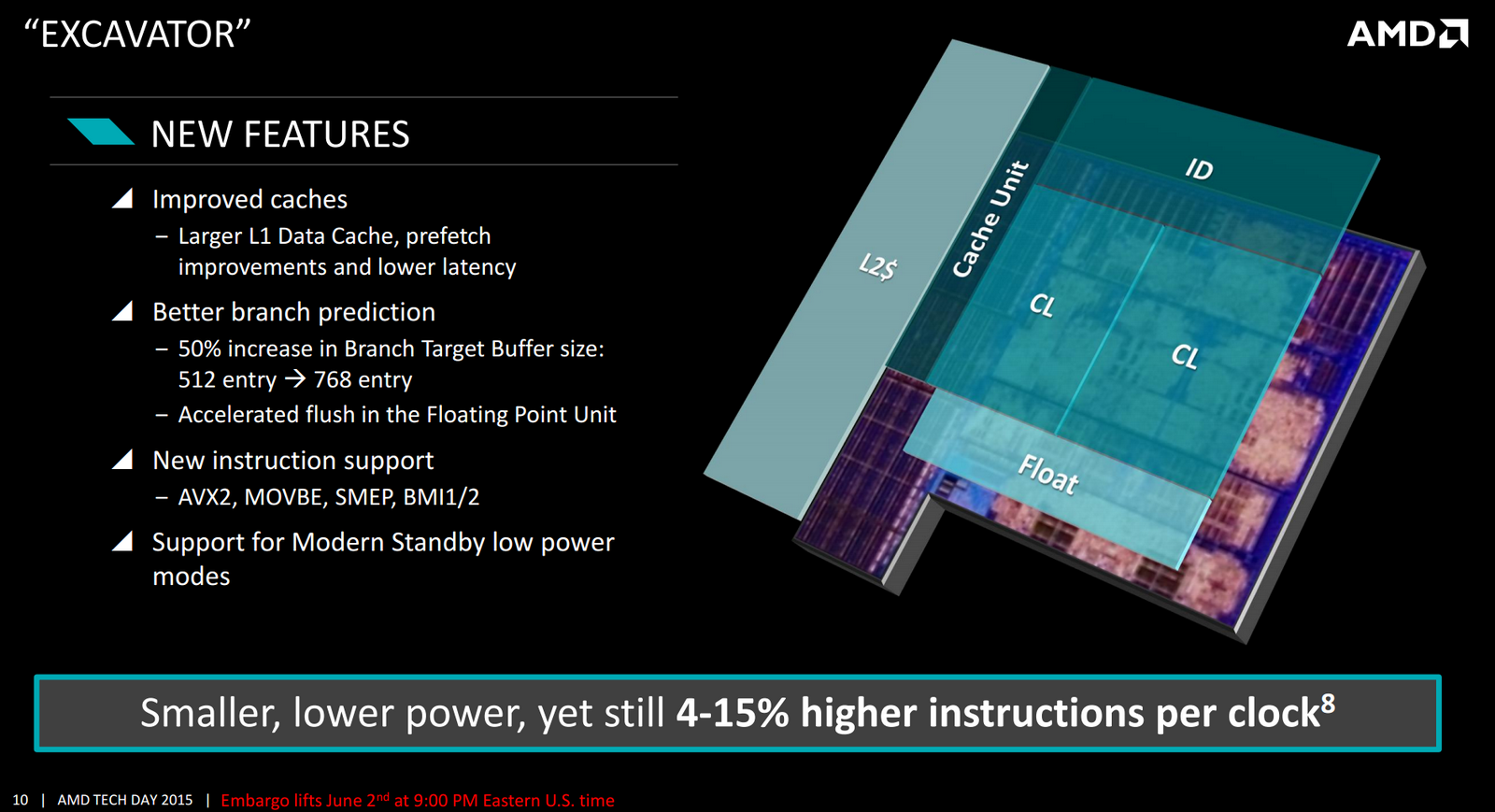Who Controls the User Experience? AMD’s Carrizo Thoroughly Tested
by Ian Cutress on February 4, 2016 8:00 AM ESTNo Room at the Win
The interesting thing about laptop design is that for the most part we are dealing with a number of devices with the same level of power consumption. This means that given sufficient standards, the same laptop shell - be it plastic, aluminium or something a bit more exotic - should be able to house different components that operate at a similar TDP, all with similar battery capacities. Thus if a company gets a ‘win’ with a laptop design, then an equivalent TDP processor from the competition (again, there are other factors involved such as controllers and z-height) should be able to work well in that same device.
But one key differentiator between Intel and AMD however is the consistent level of halo devices available with each manufacturer's hardware. It doesn't take long to find the evolutions of Intel's Ultrabook line that focus on high performance, and other premium devices designed to hit a certain combination of thickness and battery life, such as ASUS' Zenbook line or the Apple Macbook Air. In the tablet space, Intel has had design wins with the Microsoft Surface line as well as others, especially premium devices. These are all high volume, highly advertised product lines available in almost every market and not hard to find. In the case of the three mentioned above, some are household names and all of them are well known in the technical media zeitgeist.

HP Elitebook, one of the more premium designs with AMD inside
However, if AMD is mentioned in a similar vein, it is difficult to draw a single conclusion or the name of a premium or otherwise well-known laptop model from memory unless you happen to either work directly with AMD marketing or you are the product manager at a parner OEM. There have been no design wins or public contracts with AMDs mobile processors, and no big halo products that champion both performance and industrial design in a single device. As a result there has to be an element of questioning here. Are OEMs unwilling to use AMD? Do AMD products have a bad reputation? Is there something inherent with the name or product that makes OEMs reluctant, or users to withhold their purchases? Or is there something fundamentally wrong with the processor? As is often the case, the predicted answer to this question is a mixed bag.
Carrizo over Kaveri
As mentioned previously, Carrizo is the name for the family of APUs that use AMDs fourth iteration of the Bulldozer architecture, Excavator. Carrizo is built on GlobalFoundries' 28nm process node and comes inline with AMDs recent renegotiation of contracts regarding the scale and scope of the APU product line. Carrizo APUs will be available in 15W variants, which reflects the focus of the architecture update as well as the change in metal stack arrangement incorporated for this family to optimize transistor density. Meanwhile the higher-end models will have an available TDP-Up mode of 35W in order to increase performance, although this is at the discretion of the OEM. AMD for their part has already stated that their primary use case for Carrizo is at 15W, as 35W is the point where the Carrizo's power optimizations aren't quite as efficient and the performance of previous generation APUs will intersect with Carrizo (when talking raw CPU, rather than other benefits Carrizo has).
In launching Carrizo, AMD was clear on the target market for this APU - laptops in the $400-$700 range. It has been pointed out by media and analysts that this market segment represents an opportunity for AMD to fit between Intel's low power/high performance/high cost Core-M line of processors, the low power/low performance/low cost Atom line and the higher power/medium cost Core i3. According to AMD, this segment represents 40% of all laptop sales, covering users who want more than a budget device but something below the high costs of a premium device.
Meanwhile AMDs secondary aim with Carrizo is to offer premium level performance in certain applications at a lower price point by using Carrizo's stance as the first CPU architecture to be ratified against the heterogeneous system architecture (HSA) standards. As a result, AMD had been working with software developers in order to leverage HSA benefits in specific code bases and subsequently improve in performance, particularly with software of widespread importance, such as Adobe and LibreOffice.
Carrizo is a true system-on-chip (SoC), integrating the CPU, the GPU, and the input/output hub all on one piece of silicon (and thus one package). This leads to several direct benefits - reducing the power consumption of the I/O hub by bringing it down to the same process node as the main processor, allowing different areas of the SoC to be power gated under a single control system rather than recreating power delivery networks around the system, and ease of use when it comes to HSA requiring less data to travel around external buses.
AMDs main competitor in the mobile processor space, disregarding tablets for the moment and devices like Surface RT/Chromebook Pixel, is Intel. Intel, like AMD, leverages an x86 CPU design with integrated graphics on the same die. Thanks to a combination of many years of experience with graphics and designs intentionally favoring high performance integrated GPUs, AMDs main positive point of performance in recent generations has been the integrated graphics arena, where they win out typically in terms of graphics performance/cost and graphics performance/power metrics. Thus a number of improvements to Carrizo over previous architectures relate to graphics use - either using it more with HSA or offloading certain workloads to dedicated IP to keep more of the SoC at an idle state.
Carrizo’s design allows AMD to add two more graphics compute units (+33%) at 15W compared to Kaveri at a similar frequency, which combined with IPC increases in the processor has led to some interesting claims for performance. These claims have been picked up by casual readers and OEMs alike.











175 Comments
View All Comments
Danvelopment - Monday, February 8, 2016 - link
Strategy AMD should adopt:90% of people don't notice a performance difference above 3000 Super CPU Points, Intel CPUs are usually 4000-8000 Super CPU points, our chips may only range from 3500-4500 Super CPU Points but regular users won't actually notice it, and at the same performance marks we're a hundred dollars cheaper. Make the sensible choice.
Another way, we've done extensive testing to see what end users want and need, then we targeted those sectors, and where we matched Intel we made sure we were a hundred bucks cheaper on the same devices.
"We don't hold the performance crown but the price/performance crown"
Marcelo Viana - Monday, February 8, 2016 - link
Dammit, the solution should be simple, but must come from AMD, since can't expect it from oem's and all of them offer let's say 2011 sockets as example, why amd do not develop a socket switch, so a small board with 2011 pins on the bottom and a circuit on this boad to give a whatever socket amd choose connections on top of it, in order to accept amd chips.But AMD must understand that the memory on their chips must be ddr4(Carrizo do), because the lazy OEMs whon't change memory sockets, as example.
In this case the lazy ones have only to change the chip, and even better if any consumer have a old machine can upgrade to a chip that they choose. simple as that.
Anyone that sales more creates the standard on the market, the others is that must follow.
So who control the user experience? I think no one. everyone in the process just looking to explore the users in order to get money nothing more, but if i have to guess, problably the users. Because they are the one that really have the power to say "i won't buy it or that' or even better "until they give to me what i want" just my 2 cents.
farmergann - Tuesday, February 9, 2016 - link
Seems like you missed out on some highlights of the Y700. The memory is dual channel, the IPS screen has Freesync, and the sound is surprisingly awesome. Replaced the HDD with a Samsung 850 Pro and have thoroughly enjoyed it since.bitech - Tuesday, February 9, 2016 - link
Lol have they never seen a 17" laptop before? The HP Pavilion has a 1600x900 because it's 17". 1600x900 is the minimum resolution on all 17" laptops, not 1366x768.UtilityMax - Wednesday, February 10, 2016 - link
1600x900 is still a crappy resolution for such a large screen. I had a notebook with 15.5 inch 900p screen, and it was visibly grainy.mosu - Tuesday, February 9, 2016 - link
Just few words: Sabotage and corruption at high level OEM decision level. Simple as that.Arief Sujadmika - Wednesday, February 10, 2016 - link
AMD just need a feature to turn off the chips if its detect single channel memory for Carrizo then the OEM will make dual channel memory for it...thatthing - Wednesday, February 10, 2016 - link
the y700 r9 385x is a bonaire gpu, amd has no 512sp chips mobile r9 series, http://www.amd.com/en-us/products/graphics/noteboo...silverblue - Wednesday, February 10, 2016 - link
Articles like these make me want to see how good the unrestricted Athlon X4 845 will be, however as it's probably defective Carrizo silicon, I wouldn't expect it to be massively frugal. I do wonder if there will be any Bristol Ridge Athlons; the top models are rated with a cTDP of 25-45W which is a decent improvement and would reduce/eliminate throttling. Overclocking may not help in terms of power but performance would be more consistent. You also get DDR4 which isn't as big a help for the Athlons but it would be interesting to see the difference.A review of the Dell Inspiron I3656-7800BLK would be a good marker, if only to show the maximum performance of the mobile chips.
Masospaghetti - Wednesday, February 10, 2016 - link
Seems like the best configuration of a Carrizo machine would be a 35w TDP A12 with dual channel memory and integrated graphics (or discrete graphics with crossfire enabled).It's a shame that all of the machines available are severely compromised with either single channel memory, 15w TDP, lack of crossfire, or a combination of these. Seriously. The machines tested have terrible designs. Looks like AMD made a huge mistake providing a common configuration with Carrizo-L with the single channel memory.